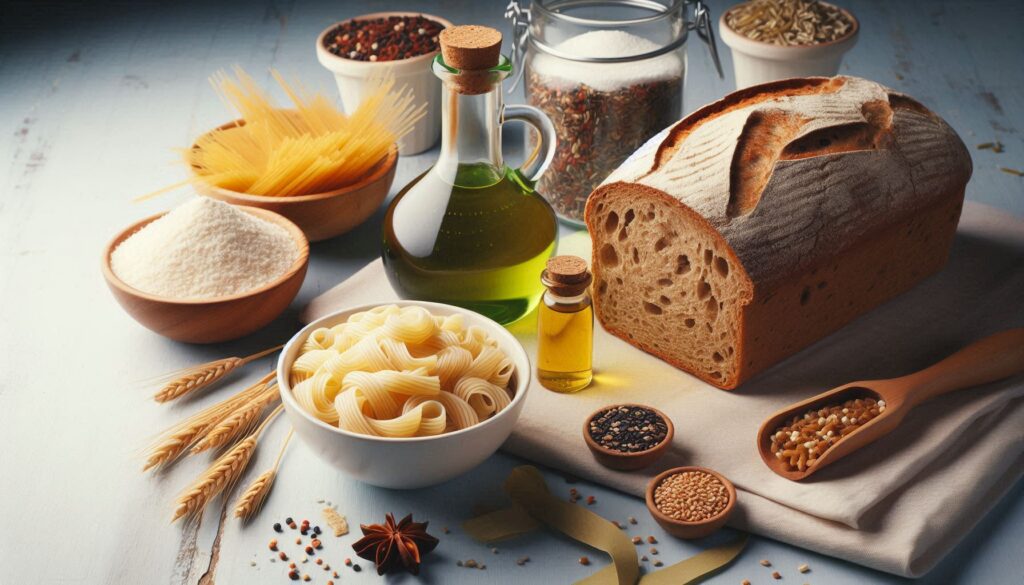
Article 18 of our Series “Nourishing Your Whole Self: The SaziBox Health Guide to Holistic Nutrition”
Welcome back to the SaziBox Health series on holistic nutrition! In our previous articles, we’ve explored the foundations of a healthy diet and addressed nutritional needs across various life stages. Today, we’re turning our attention to a topic that can significantly impact our relationship with food: food sensitivities and allergies.
Decoding the Terminology

Before we delve deeper, let’s clarify some key terms:
- Food Sensitivity: A broad term encompassing any adverse reaction to food, including intolerances and allergies.
- Food Intolerance: An inability to digest certain foods or components, leading to uncomfortable symptoms like bloating, gas, or diarrhoea.
- Food Allergy: An immune system response to a specific food protein, triggering a range of symptoms from hives and itching to life-threatening anaphylaxis.
Navigating food sensitivities and allergies can be challenging, but knowledge and awareness are key. Let’s explore some common culprits and discover practical strategies for managing dietary restrictions.
1. Gluten Intolerance: Beyond the Buzzword

Gluten intolerance refers to difficulty digesting gluten, a protein found in wheat, barley, and rye. Symptoms can vary widely, from digestive issues to fatigue and skin problems.
- Key Differences:
- Gluten Intolerance: Non-immune response, symptoms primarily digestive.
- Wheat Allergy: Immune response to wheat proteins, can cause hives, swelling, and even anaphylaxis.
- Celiac Disease: Autoimmune disorder triggered by gluten, damaging the small intestine.
Gluten-Free Living:
Going gluten-free can be overwhelming, but with the right approach, it’s manageable.
- Tips:
- Read labels carefully. Gluten can hide in unexpected places.
- Focus on naturally gluten-free foods: Fruits, vegetables, legumes, nuts, seeds, meat, fish, poultry, and dairy.
- Explore gluten-free alternatives: Gluten-free bread, pasta, and flour are readily available.
Interactive Element:
- Gluten-Free Recipe: Enjoy this delicious and easy gluten-free quinoa salad!
2. Lactose Intolerance: Dairy Dilemma

Lactose intolerance is the inability to digest lactose, the sugar in milk and dairy products. This is due to a deficiency of the enzyme lactase.
- Symptoms: Bloating, gas, diarrhoea, and abdominal cramps after consuming dairy products.
- Managing Lactose Intolerance:
- Lactose-free dairy products: Many options are available, including milk, yoghurt, and cheese.
- Lactase supplements: These can be taken before consuming dairy to aid digestion.
- Small portions: Some people can tolerate small amounts of lactose.
- Dairy alternatives: Explore plant-based milk, yoghurt, and cheese options.
Interactive Element:
- Lactose Intolerance Quiz: Answer a few questions to assess your tolerance to lactose.
3. Histamine Intolerance: The Allergy Mimic

Histamine intolerance occurs when your body has difficulty breaking down histamine, a compound involved in immune response and digestion. It’s often mistaken for allergies.
- Symptoms: Headaches, hives, digestive issues, nasal congestion, and more.
- Low-Histamine Diet: Reducing histamine intake can help manage symptoms, but it’s challenging as histamine is found in many foods.
Tips:
- Avoid high-histamine foods: Aged cheeses, fermented foods, processed meats, and certain fruits and vegetables.
- Cook fresh foods: Histamine levels increase in foods that are stored or aged.
Interactive Element:
- Downloadable High-Histamine Food Chart: Keep this handy guide to identify and avoid trigger foods.
4. Common Food Allergies: A Serious Concern

Food allergies are immune system reactions to specific food proteins. They can range from mild to severe, even life-threatening.
- Common Allergens:
- Peanuts, tree nuts, milk, eggs, wheat, soy, fish, shellfish.
- Managing Food Allergies:
- Avoidance: Strict avoidance of the allergen is key.
- Read labels carefully: Be aware of potential cross-contamination.
- Emergency preparedness: Carry an epinephrine auto-injector (EpiPen) if prescribed.
Interactive Element:
- Allergy-Friendly Kitchen Guide: Download our guide for creating a safe kitchen environment for people with food allergies.
Navigating food sensitivities and allergies can be complex, but with knowledge and awareness, you can make informed choices and enjoy a fulfilling diet. Remember:
- Seek professional guidance: Consult a doctor or registered dietitian for accurate diagnosis and personalized dietary advice.
- Read labels carefully: Always check ingredient lists and be mindful of potential cross-contamination.
- Be prepared: Have an emergency plan in place for managing allergic reactions.
- Don’t let dietary restrictions limit your enjoyment of food: Explore new recipes and ingredients, and focus on the abundance of delicious and nutritious options available to you.
- Share your experiences and tips for managing food sensitivities and allergies in the comments below!
- Let’s create a supportive community and inspire each other to thrive despite dietary restrictions.
Remember, nourishing your whole self includes honouring your body’s unique needs. Embrace the journey of discovering foods that make you feel your best!




Hi! This post could not be written any better! Reading this post reminds me of my old room mate! He always kept talking about this. I will forward this article to him. Pretty sure he will have a good read. Thanks for sharing!
thanks
Truly when someone doesn’t be aware of after that its up to other
people that they will help, so here it takes place.
thanks
I found this article to be very eye-opening. Thanks for sharing.
You’re welcome! I’m glad you found it insightful. If you have any more thoughts or questions about the article, feel free to share! 😊
Hello there! I know this is kind of off topic but I was
wondering if you knew where I could get a captcha plugin for my comment form?
I’m using the same blog platform as yours and I’m having problems finding one?
Thanks a lot!
Hello there! No worries about being off-topic. If you’re looking for a CAPTCHA plugin for your comment form, I recommend trying the Advanced Google reCAPTCHA plugin. It’s a popular choice for WordPress and can help protect your site from spam comments and brute-force attacks1. You can easily add it to your comment form, login form, and other forms on your site.
To get started, you can install and activate the plugin from the WordPress Plugins page. After activation, you’ll need to configure the plugin settings and provide Google reCAPTCHA API keys, which you can obtain for free from the official reCAPTCHA website2.
If you need a step-by-step guide, WPBeginner has a detailed tutorial on how to add reCAPTCHA to your WordPress comment form2.
Good luck, and feel free to reach out if you have any more questions!
Hello there I am so delighted I found your site,
I really found you by mistake, while I was browsing on Yahoo for something else, Nonetheless I am here now and would just like to say thank you for a fantastic post and
a all round thrilling blog (I also love the theme/design),
I don’t have time to read through it all at the moment but I have bookmarked it and also added your RSS feeds, so when I have time I will be back to read
more, Please do keep up the superb work.
Thank you so much for your kind words! I’m thrilled to hear that you enjoyed the post and the blog’s design. It’s always wonderful to know that our content resonates with readers. Feel free to come back anytime to explore more. Your support means a lot to us. Have a fantastic day! 😊